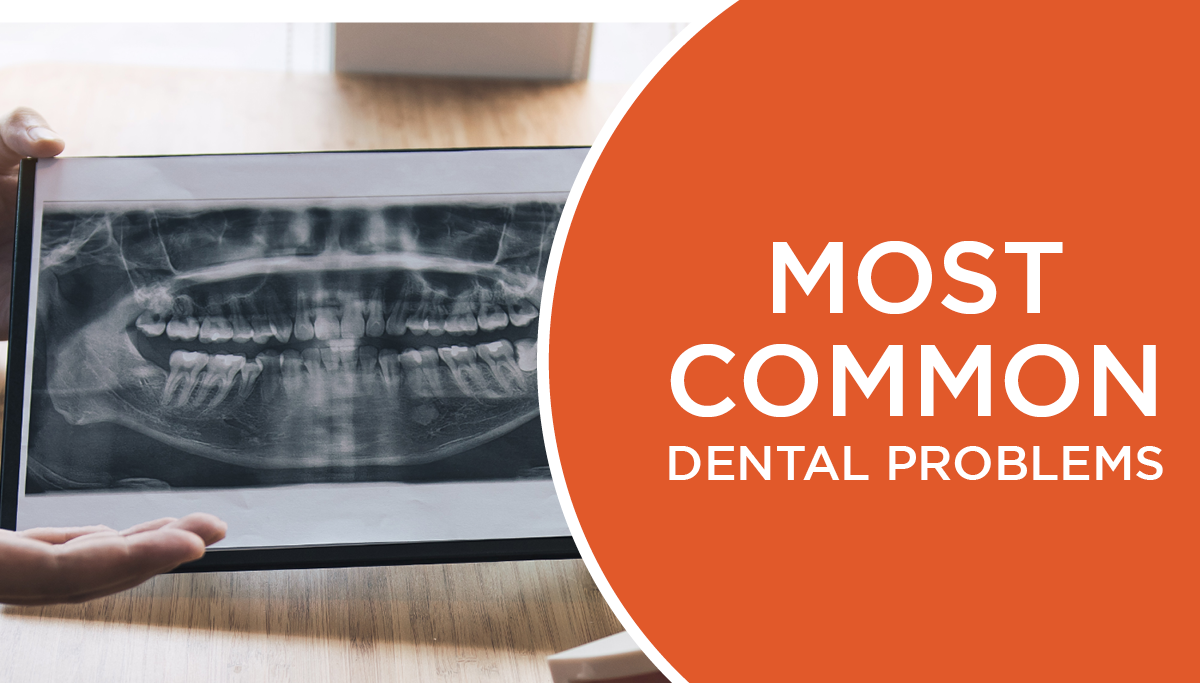The most common dental problems
Misaligned bites, broken teeth, and mouth ulcers are just a few of the dental problems people deal with. However, some dental problems are more common than others. You’ve likely experienced at least one oral health problem at some point in your life.
In this article, we delve into some of the most common dental problems and the best ways to prevent them.
Common dental problems
Some of the most common dental problems people experience are:
Tooth decay
Tooth decay, or dental caries or cavities, is one of the most prevalent dental health problems in the United States. The CDC estimates that almost 90 percent of adults aged 20 and older have had at least one cavity in their lifetime.
Cavities are caused by bacteria in the mouth that produce acid that attacks teeth. This can be the result of poor dental hygiene, such as not brushing or flossing; diet, such as consuming sugary drinks and food or too much snacking throughout the day; not using toothpaste with fluoride; and neglecting dentist appointments. When left untreated, cavities can cause infections, tooth pain, and even tooth loss over time.
The good news is that cavities are nearly 100% preventable! Small changes in lifestyle such as choosing a toothpaste with fluoride, picking healthier snacking options, and regularly seeing a dentist are your best protection against this common dental problem.
Gum disease
Gum disease (periodontal disease) is an infection of the soft tissues (gums) that hold your teeth in place. This can lead to red, swollen, and bleeding gums in the beginning. Over time, teeth may become loose and need to be removed if the infection is not treated. Gum disease can also threaten your overall health and is linked to many other medical conditions.
In the U.S., nearly half of the adult population aged 30 and older has some form of gum disease. The good news is that gum disease can be treated in its early stages with a good oral hygiene routine at home and regular visits to the dentist. If not treated early, more invasive procedures to clear the infection may be needed.
Sensitive teeth
If you have pain when you eat something hot, cold, sweet, or sour, you may have tooth sensitivity. The Academy of General Dentistry estimates that 40 million people in the United States have had some degree of tooth sensitivity.
Tooth sensitivity is usually caused when the hard enamel on the outside of a tooth is worn down. As the enamel thins, small tubes in the teeth can become exposed, which causes the pain felt when eating or drinking certain foods and beverages. In severe cases, the sensitivity can become so painful that it affects the way people eat and drink.
The most common treatment is to use desensitizing toothpaste and toothbrushes with medium or soft bristles. At the dentist’s office, your oral health care team can apply desensitizing treatments such as sealants or stannous fluoride. If you experience any new or worsening tooth sensitivity or pain, it’s important to see your dentist to make sure there are no other issues that could be causing the discomfort.
Toothache
Tooth pain (usually referred to as a toothache) is another common dental problem 40 percent of Americans experience each year. Toothaches can cause mild to severe discomfort, depending on what the cause is. For example, a piece of food lodged between teeth can cause slight discomfort while an infection in the tooth can be excruciating.
Toothaches can be treated at home by remedies like saltwater rinses, cold compressions, and pain-relief medication. However, if the toothache is caused by something serious such as an infection, cavity, or tooth abscess, immediate treatment from a dentist will be needed.
If you have recurring toothaches, be sure to let your dental team know. Although toothaches are common, it’s important to make sure there are no underlying reasons for them.
Bad breath
Bad breath is normal after a meal filled with garlic, onions, or certain other strong-smelling foods. However, chronic bad breath could be a sign of a more serious oral health problem. One in four people have bad breath that doesn’t seem to go away with common remedies.
In most cases, chronic bad breath is caused by poor oral hygiene and not visiting the dentist for cleanings. If you have a good oral health care routine and a healthy mouth, bad breath may be linked to a different area in the body. Dry mouth, certain head and neck cancers, digestive disorders, gum disease, diabetes, and tonsil stones are other causes of the condition.
Bad breath is generally treated at home by improving dental hygiene routines and by visiting the dentist regularly. In some cases, a special mouth rinse can be used to kill bacteria in your mouth. If it’s caused by another condition, your dentist may recommend a visit to your general care physician to check for other problems in the body that may be the cause.
Most common dental problems are preventable
The good news about most common dental problems is that they’re preventable. A good oral health care routine, regularly seeing a dentist, and making healthy choices for your mouth and body can reduce the risk of developing cavities, gum disease, and other conditions.

